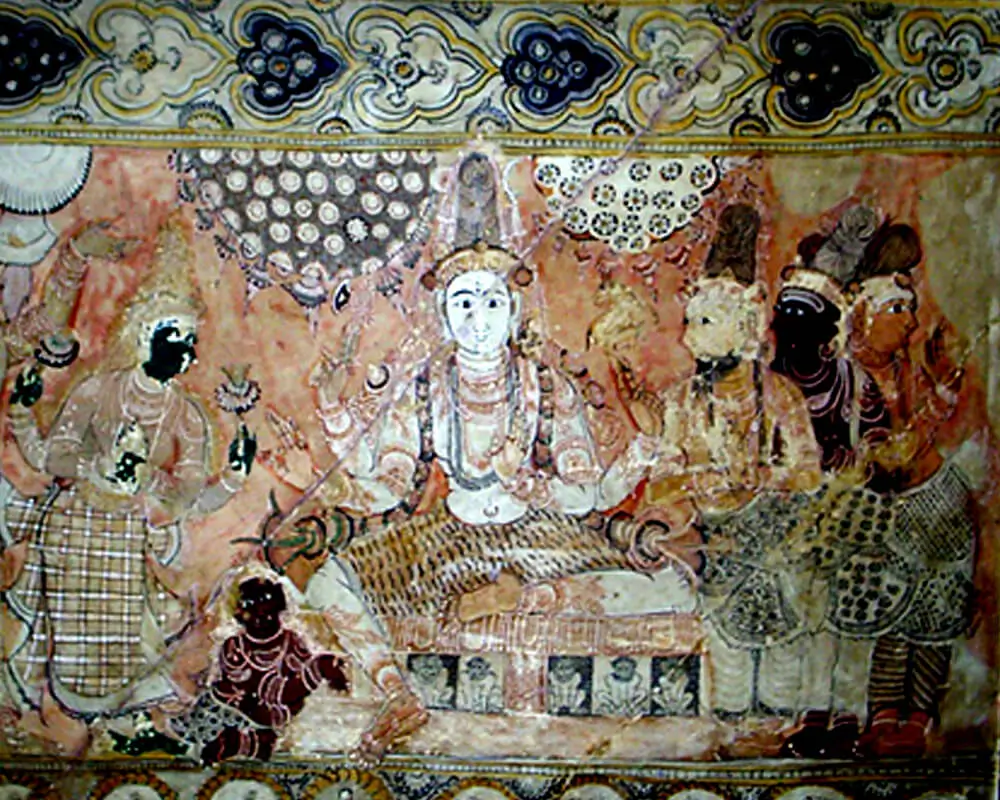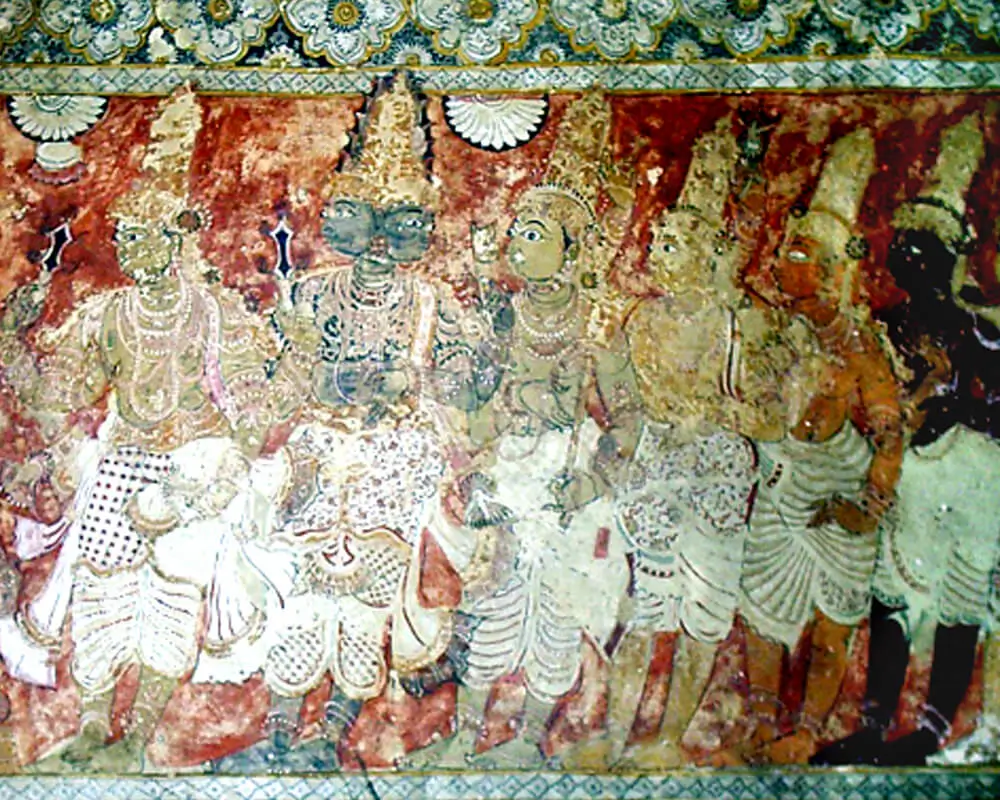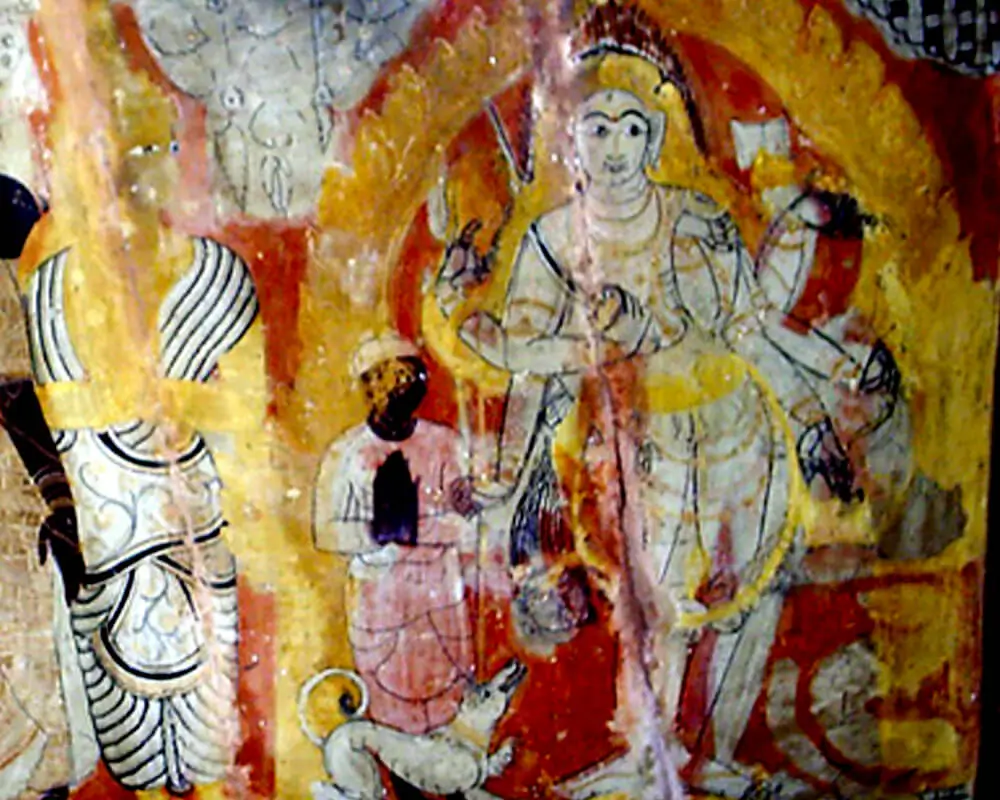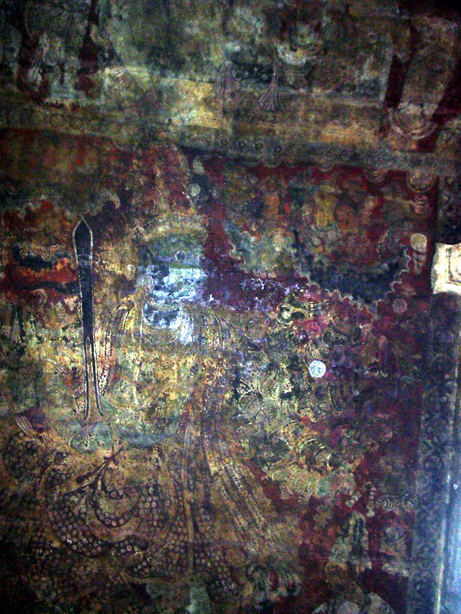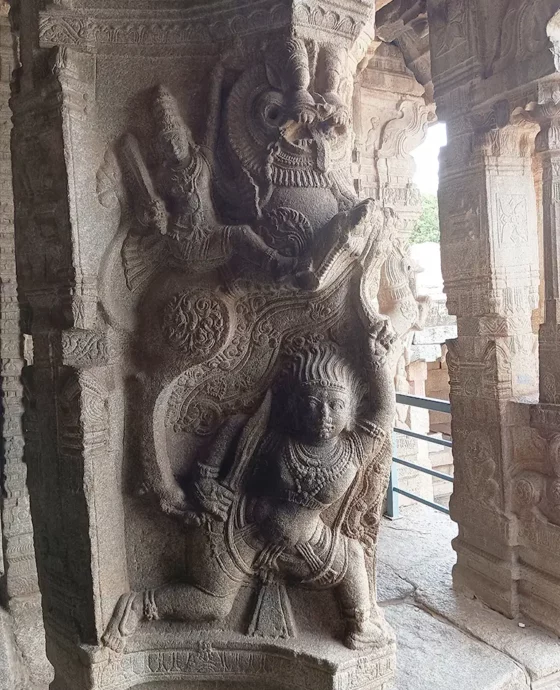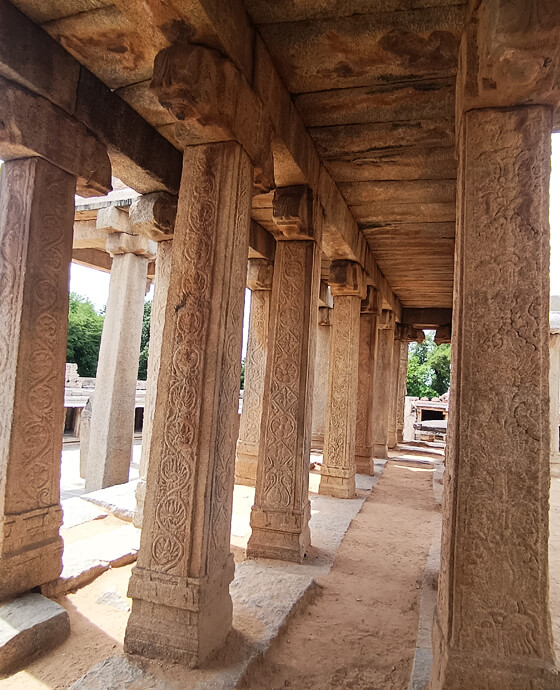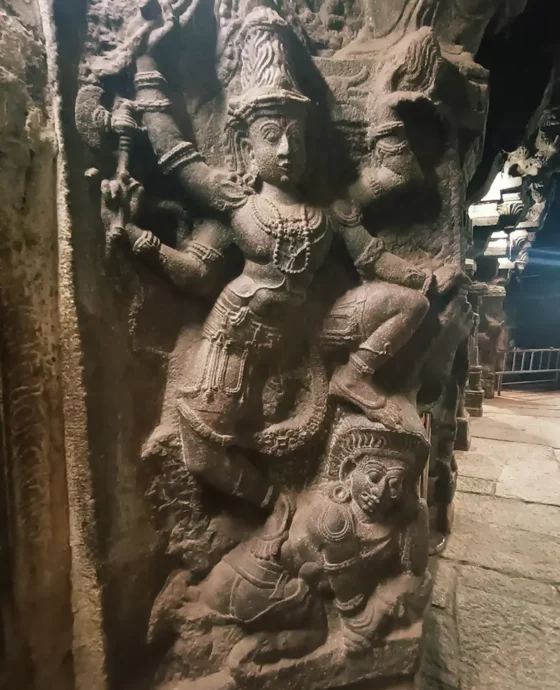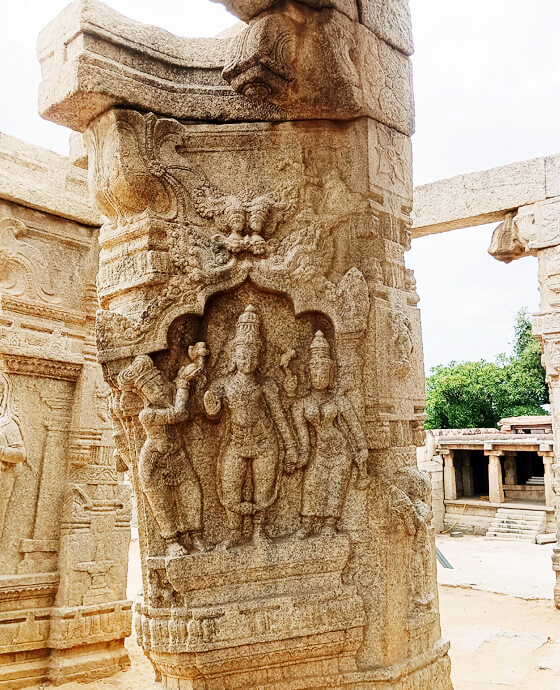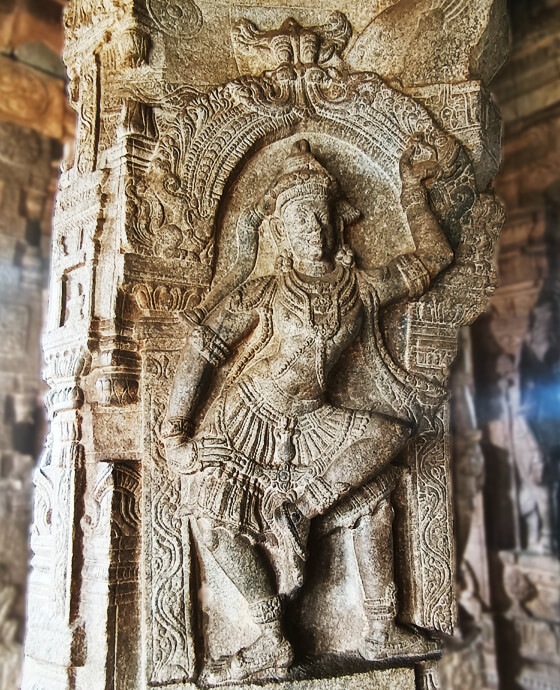Lepakshi Temple Murals
Discover the Marvelous Lepakshi Temple Murals
Nestled within the sacred precincts of the Lepakshi Veerabhadra Temple lies an extraordinary treasure trove of art and history—stunning mural paintings that breathe life into the grandeur of the Vijayanagara Empire. These intricate murals, among the most significant pictorial depictions of their time, unveil the stories of mythology and courtly life that thrived during the illustrious era of the Vijayanagara dynasty in southern India.
These pillars come in three distinct varieties: some feature a single pillaret projecting elegantly, while others boast two pillarets projecting gracefully. The most captivating are the pillars adorned with substantial deity images carved onto projections of the shaft, each bearing witness to the divine union of Lord Shiva and Devi Parvati. These intricate carvings depict numerous sages, celestial beings, including Dhanvantari and the eight Dikpalakas, all gracing the pillars as esteemed guests to the divine nuptials.
The Lepakshi Temple, built under the patronage of the brothers Virupanna Nayaka and Viranna during the reign of Vijayanagara ruler Achutaraya in the 16th century, boasts of captivating murals that grace the ceilings of its mahamandapa and various shrines. These exquisite paintings narrate a multitude of tales, including episodes from the epic sagas of the Ramayana and Mahabharata, as well as narratives from the Puranas.
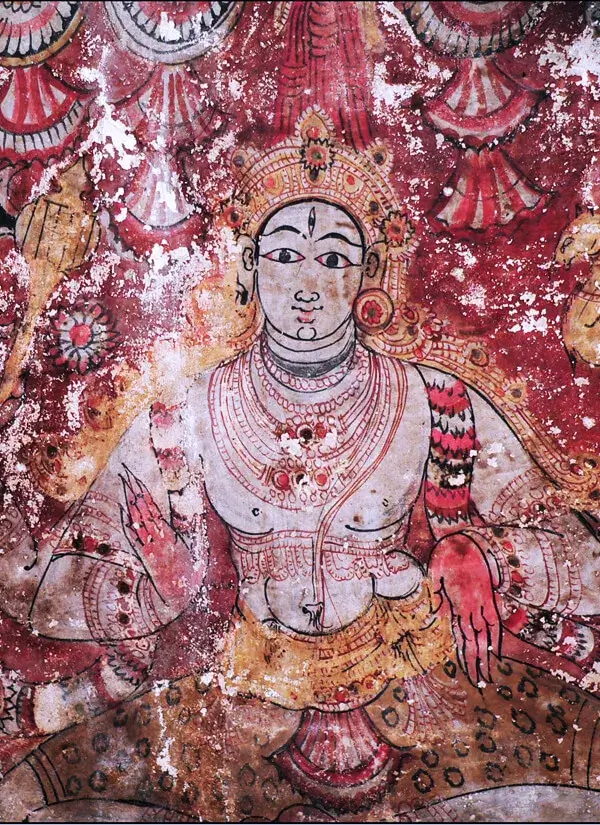
What sets the Lepakshi murals apart is their distinctive composition. The elongated panels align perfectly with the bayed columns of the temple’s mandapas, verandahs, and corridors. As a result, the mural strips vary in length, ranging from a modest 5 meters to an astonishing 25 meters.
The grandeur of the Lepakshi murals reaches its zenith in the temple’s mahamandapa, where a colossal depiction dominates the ceiling. At its center, a monumental figure of Virabhadra, flanked by Viranna and his wife, is portrayed with utmost reverence. This composition encompasses thirteen panels, each further divided into sub-panels. These captivating visuals narrate stories from Lepakshi’s sthalapurana, mythological episodes, and a grand procession featuring a guru carried aloft in a palanquin, surrounded by guards. Surrounding the central mural, decorative paintings adorn the edges, showcasing mythical creatures, celestial beings, devotees, dancers, and musicians.
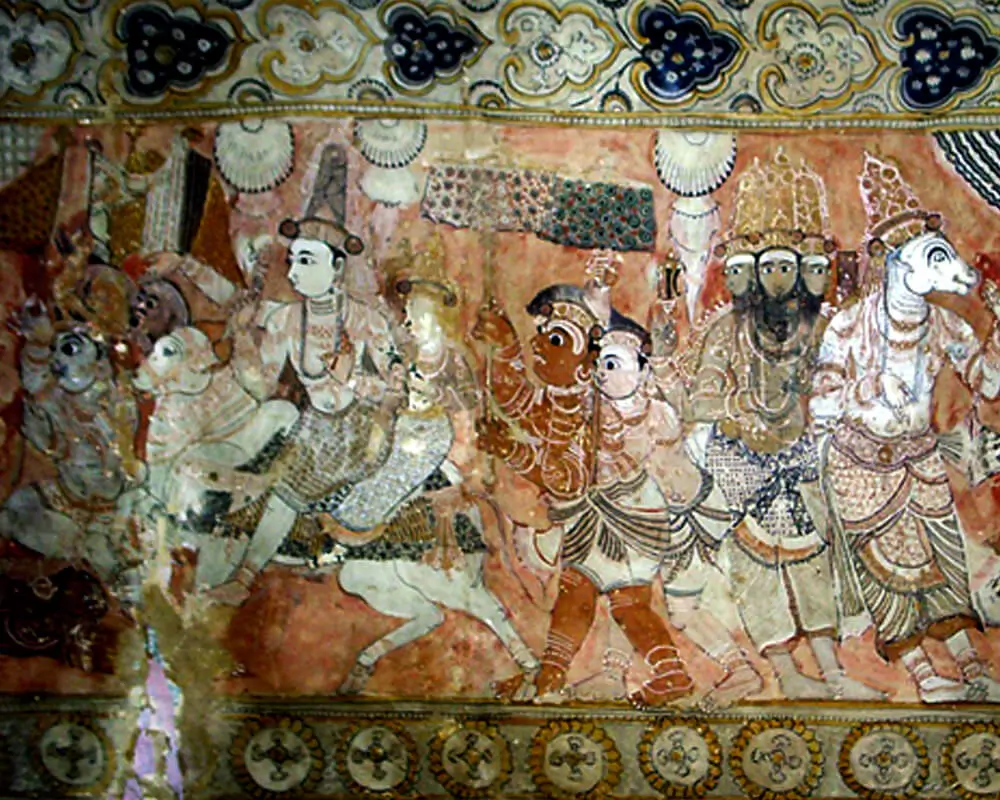
Creating these masterpieces involved a meticulous process. The granite surfaces were first coated with a mixture of sandy clay from nearby riverbeds, red ochre, and lime powder mixed with liquid molasses. The scenes were then sketched with red ochre and later filled in with vibrant colors, all outlined meticulously with fine black strokes. The color palette featured earthy tones of red, black, green, yellow-ochre, various shades of white and gray, with occasional hints of blue-green.
While the murals primarily focus on mythology, they also provide valuable insights into the social and religious life of their time. These vibrant depictions showcase individuals adorned in an array of costumes, jewelry, and headgear. Notably, the natyamandapa reveals male courtiers engaged in worship, donning white tunics paired with tall conical caps known as “kabayi” and “kullayi.” These garments bear Islamic influences, reflecting the rich tapestry of cultural exchange during the Vijayanagara era.
The attire depicted in the Lepakshi murals reveals the syncretic nature of the Vijayanagara Empire’s material culture. These artworks align with accounts from Persian, Chinese, Portuguese, and Italian travelers, providing valuable insights into the clothing styles of the Vijayanagara elite.
Beyond their historical significance, the Lepakshi murals are considered the precursor to Kalamkari painting. The motifs of birds, animals, and foliage found in these murals continue to inspire contemporary textiles, tapestries, and rugs.
Although the Lepakshi murals have endured the test of time, many have undergone retouching in later periods. Nevertheless, the original figures retain their old-world charm and posture, preserving the magic of Lepakshi’s artistic heritage.
As you explore the Lepakshi Temple, these murals offer a window into a bygone era, where art and devotion converged to create timeless treasures. They are not just paintings; they are a testament to the cultural richness and artistic finesse of the Vijayanagara Empire, waiting to be discovered and cherished by generations to come.
The 24 by 14 ft fresco of Veerabhadra on the ceiling before the main sanctum sanctorum is the largest in India of any single figure.


